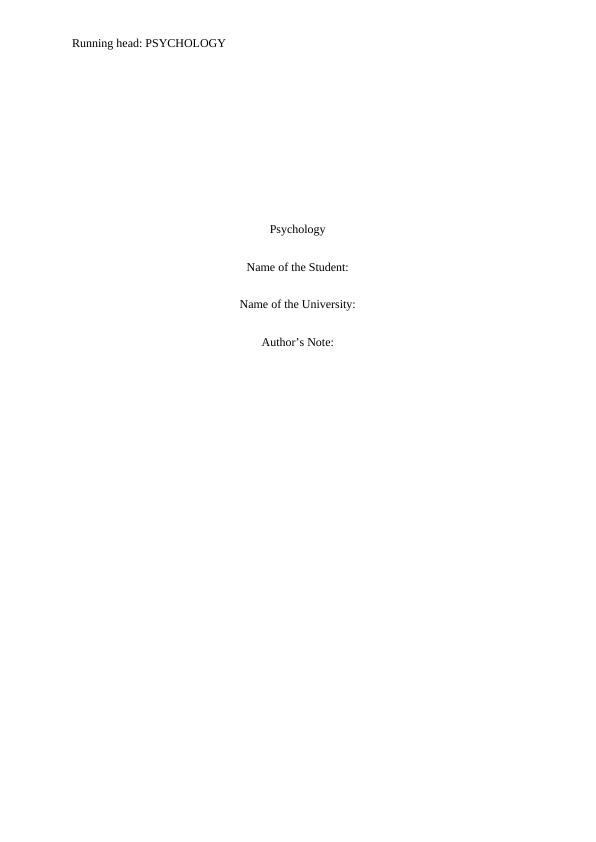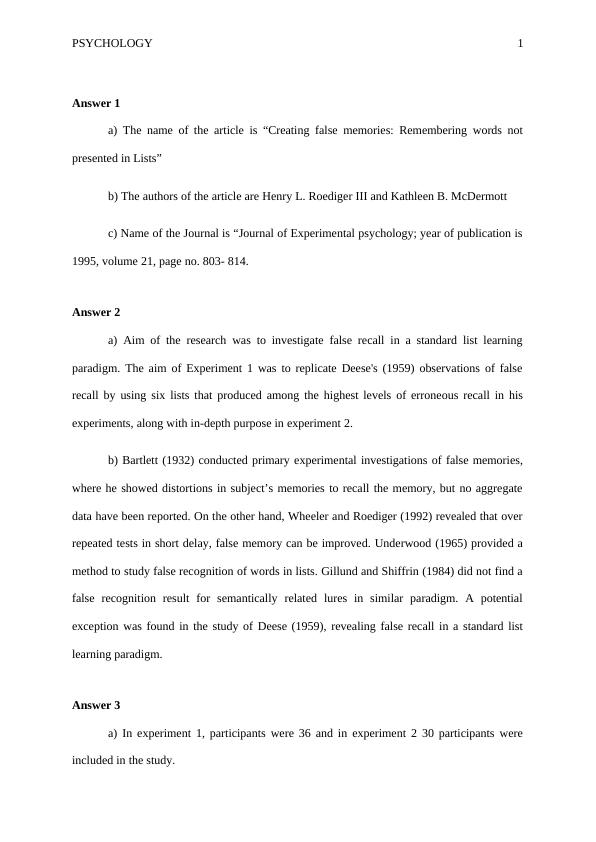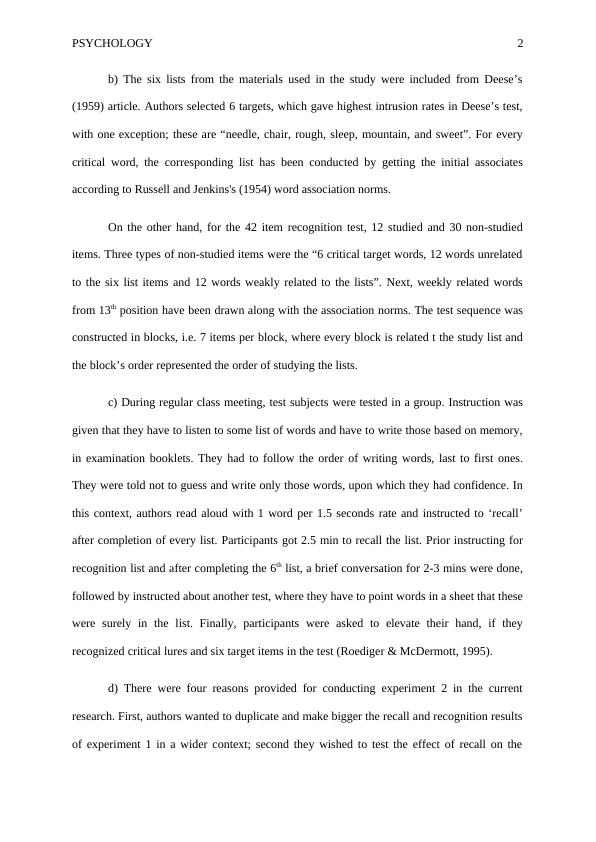Introduction to Psychology I PSY107 - SUSS
Added on 2020-03-04
8 Pages2105 Words192 Views
Running head: PSYCHOLOGYPsychologyName of the Student:Name of the University:Author’s Note:

PSYCHOLOGY 1Answer 1a) The name of the article is “Creating false memories: Remembering words notpresented in Lists”b) The authors of the article are Henry L. Roediger III and Kathleen B. McDermott c) Name of the Journal is “Journal of Experimental psychology; year of publication is1995, volume 21, page no. 803- 814.Answer 2a) Aim of the research was to investigate false recall in a standard list learningparadigm. The aim of Experiment 1 was to replicate Deese's (1959) observations of falserecall by using six lists that produced among the highest levels of erroneous recall in hisexperiments, along with in-depth purpose in experiment 2. b) Bartlett (1932) conducted primary experimental investigations of false memories,where he showed distortions in subject’s memories to recall the memory, but no aggregatedata have been reported. On the other hand, Wheeler and Roediger (1992) revealed that overrepeated tests in short delay, false memory can be improved. Underwood (1965) provided amethod to study false recognition of words in lists. Gillund and Shiffrin (1984) did not find afalse recognition result for semantically related lures in similar paradigm. A potentialexception was found in the study of Deese (1959), revealing false recall in a standard listlearning paradigm. Answer 3a) In experiment 1, participants were 36 and in experiment 2 30 participants wereincluded in the study.

PSYCHOLOGY 2b) The six lists from the materials used in the study were included from Deese’s(1959) article. Authors selected 6 targets, which gave highest intrusion rates in Deese’s test,with one exception; these are “needle, chair, rough, sleep, mountain, and sweet”. For everycritical word, the corresponding list has been conducted by getting the initial associatesaccording to Russell and Jenkins's (1954) word association norms. On the other hand, for the 42 item recognition test, 12 studied and 30 non-studieditems. Three types of non-studied items were the “6 critical target words, 12 words unrelatedto the six list items and 12 words weakly related to the lists”. Next, weekly related wordsfrom 13th position have been drawn along with the association norms. The test sequence wasconstructed in blocks, i.e. 7 items per block, where every block is related t the study list andthe block’s order represented the order of studying the lists. c) During regular class meeting, test subjects were tested in a group. Instruction wasgiven that they have to listen to some list of words and have to write those based on memory,in examination booklets. They had to follow the order of writing words, last to first ones.They were told not to guess and write only those words, upon which they had confidence. Inthis context, authors read aloud with 1 word per 1.5 seconds rate and instructed to ‘recall’after completion of every list. Participants got 2.5 min to recall the list. Prior instructing forrecognition list and after completing the 6th list, a brief conversation for 2-3 mins were done,followed by instructed about another test, where they have to point words in a sheet that thesewere surely in the list. Finally, participants were asked to elevate their hand, if theyrecognized critical lures and six target items in the test (Roediger & McDermott, 1995). d) There were four reasons provided for conducting experiment 2 in the currentresearch. First, authors wanted to duplicate and make bigger the recall and recognition resultsof experiment 1 in a wider context; second they wished to test the effect of recall on the

End of preview
Want to access all the pages? Upload your documents or become a member.
Related Documents
Deese-Roediger-McDermott (DRM) Paradigm: A Study on False Memorylg...
|14
|3253
|146
Classic Studies & Cognitive Psychology Practical | Deskliblg...
|14
|3353
|309
Role of Imagery Instructions in Reducing DRM False Memorieslg...
|7
|1317
|343
HPS 203/773 - The Human Mindlg...
|11
|2864
|53
Psychology Assignment | Effects Of Age On Rate Of False Recognitionlg...
|9
|1242
|120
The Serial Position Effect in Short-term Memorylg...
|15
|3114
|28
